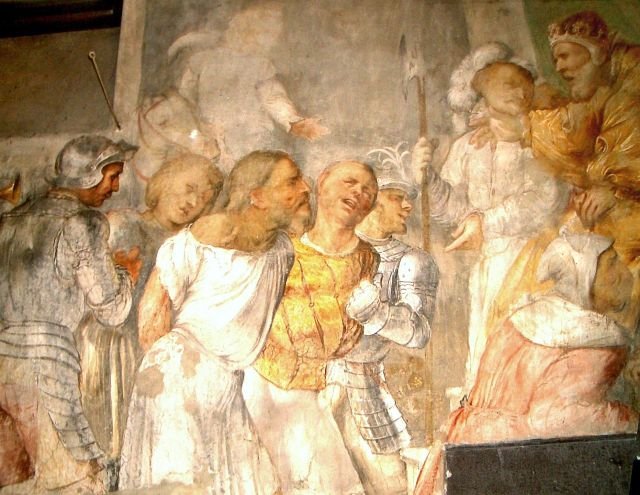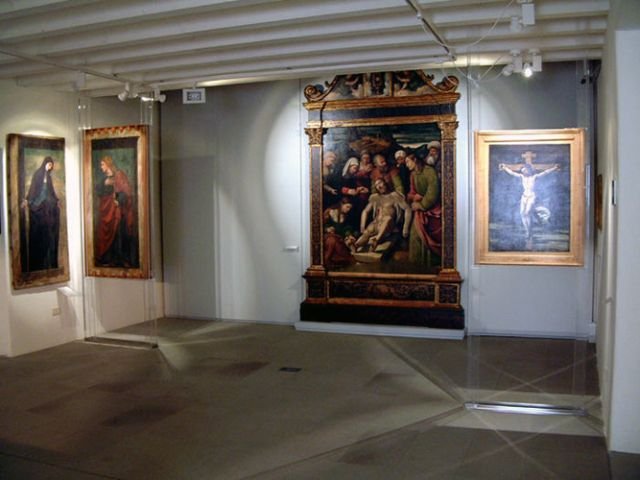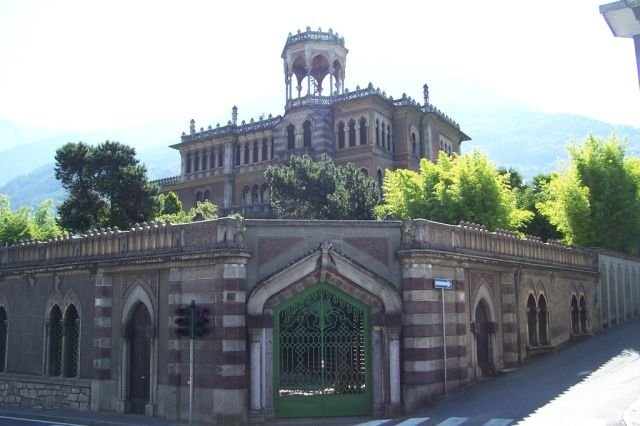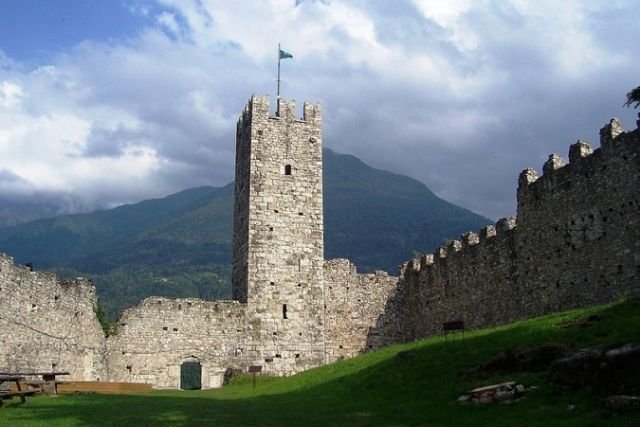'Breno in Val Camonica and it's castle'
Fidelity House (Italy)
Administrative center of Val Camonica, Breno owes its fame mainly to the Castle, but there are many attractions of the locality: find out more
Breno is a small town in Val Camonica with about 58 square kilometers (14,332 acres) with just under 5,000 inhabitants. Administratively it belongs to the province of Brescia, in Lombardy, and is the administrative center of the Mountain Community of Valle Camonica, also hosting its headquarters.
The territory, located about 340 meters above sea level, is mainly mountainous. To the west it is bordered by the main furrow of the Val Camonica, while to the east it reaches the highest part also includes the Caffaro Valley,until it reaches the border with Trentino Alto Adige. The highest elevation of the municipality of Breno, however, is close to 2,850 meters (9,350 feet), with the Cornone di Blumone, one of the peaks of the Adamella mountain group.
Breno: what to see
In addition to the famous castle, which we will talk about in the next paragraph, there are many attractions present in the Municipality of Breno. First of all its main square, Piazza del Mercato, today dedicated to the memory of General Pietro Ronchi. It is an ancient square, probably born as a place of arms, and is suggestive above all for the splendid palaces that surround it, belonging mainly to the 6th and 7th centuries, such as the Casa Franceschetti.
 |
| A detail of the frescoes of the Church of Sant'Antonio di Breno |
Very interesting, as far as sacred buildings are concerned, is the Church of Sant'Antonio, inside which every year the Art Prize of the city of Breno is held. It dates back to about 1300, and has a Gothic style with a single nave. Inside the presbytery, of considerable value is a fresco attributed to romanino, while the other ornaments date back mainly to the fifteenth century.
Another important example of sacred art is the Church of San Michele, of which today only the foundations dating back presumably to the Lombard era remain. Also noteworthy is the Parish church of San Salvatore,one of the most important Baroque buildings in the entire Val Camonica; dating back to 1600, stands out in particular for its bell tower, 65 meters high. There are numerous artistic masterpieces inside, considered a small museum.
 |
| One of the rooms of the Camuno Museum (or CaMus) in Breno |
Also worth visiting is the Camuno Museum in Breno, born at the beginning of the twentieth century and today located on the second and third floors of the 'Palazzo della Cultura' in Breno, where the municipal library is also located. Divided into 10 rooms and a loggia, the museum houses finds and works of art from the prehistoric age up to the twentieth century of the Camunian community (from which derives the name of Val Camonica), with pictorial testimonies, coats of arms and portraits of Camunian families, artifacts concerning liturgical furniture and civil furniture and, precisely, finds dating back to the prehistoric age.
Finally, we recommend a visit to the splendid Villa Gheza, construction of the last century, in arabesque style and 'kitch' so much so that the people of the time, in a period of serious crisis for the area, became indignant and spoke of wasting money. Today, however, it remains a curious and important find of recent history.
 |
| The particular 'eastern' structure of villa Gheza in Breno |
Castle of Breno
A monument rich in history, the Castle of Breno is the real symbol of the main town of Val Camonica. More than just a castle, it is an intricate complex of buildings, built over the centuries for different purposes. Born under Frederick I Barbarossa (12th-13th centuries), it was transformed into a military stronghold with the Republic of Venice (15th-16th centuries): the current appearance is the result of these historical stratifications, enriched by the fact that it seems that this area was a settlement town already several millennia before the birth of Christ.
The visit to the Castle of Breno starts from the area of the tower, which allows us access to the courtyard, to whose left is located the medieval church, the oldest monument brought to light in Breno. There are many areas in which to observe the historical traces of the castle; we recommend, in particular, the stately two-storey house-tower, and a 1200's palace with a 20-meter tower accessible to visitors. Very interesting, then, the numerous remains of settlements of prehistoric communities of the Paleolithic, Neolithic and Copper Age.
 |
| The Tower of The Castle of Breno |
Hotels in Breno
Breno is the administrative capital of Val Camonica. A place that has been established for several millennia, in recent decades it has become a tourist destination increasingly sought after by visitors, while also expanding its accommodation, however gaunt compared to demand. In this regard, we recommend two of these facilities in particular.
The first is the Hotel Ristorante La Villetta, a small 2-star structure excellently reviewed by users of the various travel sites. Free private parking, on-site restaurant with Lombard and national specialties, terrace overlooking the mountains and free wifi throughout the property, are just some of the services offered here. Very characteristic are the accommodations, which have flat screen TVs and private bathroom with bidets, bathrobes and courtesy sets, while in some of them you will also have a terrace or panoramic balcony, overlooking the beautiful Val Camonica. Prices more than competitive, highly recommended!
 |
| The lobby of the Hotel Giardino |
About 250 meters (273 yards) from the Breno station is the Hotel Giardino, a beautiful 3-star structure with all the necessary comforts. Very nice rooms, which have clear walls and curtains and have a TV and a private bathroom with hairdryer and courtesy set, as well as free wifi, available throughout the hotel. Free parking, a rich breakfast buffet with sweet and savory foods (including local organic specialties) and on request menus for particular diets, in addition to an on-site restaurant-pizzeria are the services provided in the common areas. Great location, acceptable prices, courteous and attentive staff: vote, 10!
Breno Climate and Weather
The climate of Breno, given the great difference in height of the municipal territory--almost 2,500 meters! (about a mile and a half)--is very difficult to interpret and describe. Of course, what interests us is the climate of Breno and its vicinity, where you will find your accommodation: well, it is a particularly mild climate, with the average temperatures that only in January and February fall below zero. On the other hand, very cool and breezy summers, with the hottest month, July, which has an average of just 20 degrees.
************
Brennus, known as Brenno in Italian, is the name of two different Gaulish warlords; one who famously invaded Rome in the 4th century BCE, and another lessor-known Brennus who invaded the Balkans and Greece in the 3rd century BCE. I have heard that the city of Breno possibly may have got its name partly from the first Brennus who invaded Rome, whom was featured in a 1963 Italian film entitled 'Brennus, Enemy of Rome'. At the time of Brennus' invasion of Rome, Cisalpine Gaul would very much have had its allegiance with the Gaulish warlord from north of the Alps, not with Rome. The Camunni were one of the 45 Alpine tribes conquered by the Romans over 300 years later, so Brennus would have been a great hero to all Gaulish peoples. The name of the city of Breno came from the Camunian Bré; also Brenn in old German. However, I wonder if the latter could have been of Langobard, Cimbrian, Celto-German, or even Gaulish origin?
Brennus: Warlord of the Cisalpine Gauls - Part III
.













